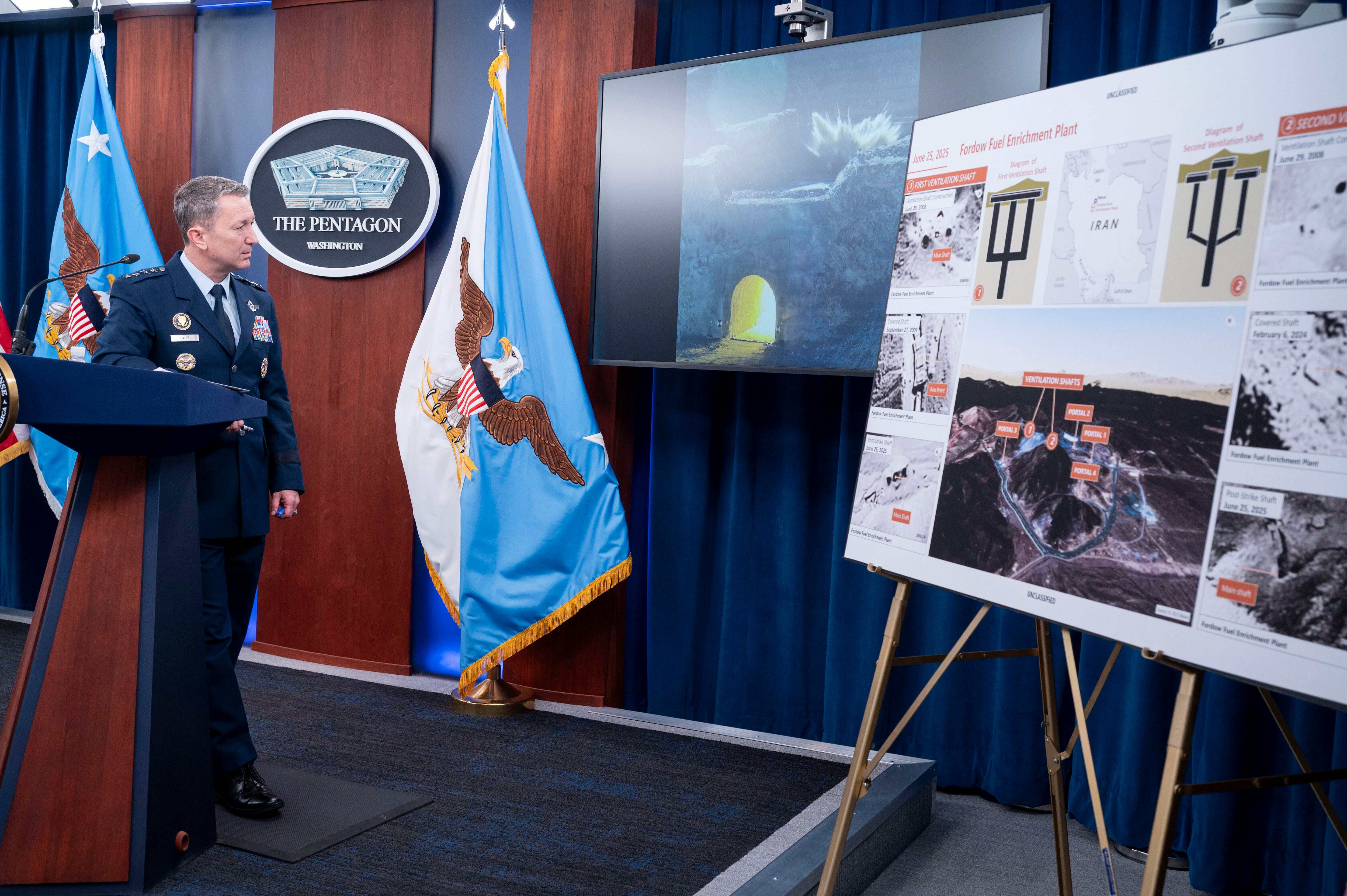On March 21, President Donald Trump announced that Boeing was being awarded the contract to develop the Next Generation Air Dominance fighter, or NGAD, now called the F-47 — a major commitment by the Trump administration.
As outgoing secretary of the Air Force in the Biden administration, I had the opportunity to make that decision but I chose to defer it until after the presidential election. Why? At first glance, the decision to ensure the U.S. Air Force has the most capable manned fighter in the world doesn’t seem to be a tough call.
But Congress needs to look beyond the obvious appeal of this advanced aircraft and ask the Trump administration some hard questions: Is this the right airplane for our defense strategy? Is it affordable? Does it displace higher priorities? I deferred the NGAD decision because I didn’t have those answers before I left the Department of the Air Force — and it’s unclear whether the Trump administration has them now.
I started the NGAD program in 2015, when I was under secretary of defense for acquisition, technology and Logistics. At the time, I launched the Aerospace Innovation Initiative, or AII, to build experimental prototypes, known as X-planes, that would develop and test high-risk and high-payoff technologies for the next generation of fighters after the F-35, while also supporting competition and maintaining cutting-edge aircraft design teams in the defense industrial base. This program successfully produced the technologies that are the basis for the designs that competed to become the F-47.
Following AII’s success, the Air Force moved on to developing more detailed tactical designs with all the features and subsystems required to support the Air Force’s chosen mission. When I returned to the Pentagon as Secretary of the Air Force in 2021, I found that the Air Force had decided to pursue a follow-on to the F-22, a fighter designed for manned Penetrating Counter Air, or PCA, missions. Such missions involve flying deep into enemy airspace and fighting against robust, state-of-the-art defenses. The PCA emphasis brought with it significant costs — tens of billions for development and hundreds of millions per aircraft for production. These expenses limit the potential aircraft inventory to small numbers. We currently have fewer than 200 F-22s. These airplanes are precious, and we can’t tolerate high losses in this fleet.
We don’t know what conflicts or warfighting scenarios will drive the Trump administration’s defense investments. PCA designs are based on the need to take the air superiority fight deep into heavily defended enemy territory, but we have to ask: Is this a sound planning scenario for nuclear powers like China or Russia? If the Trump administration’s strategy emphasizes homeland security and defensive scenarios, wouldn’t a lower cost design more focused on Defensive Counter-Air, or DCA, make more sense? Would a multirole next-generation design, like the F-35, make more sense? Would an aircraft designed to work with uncrewed tactical aircraft, like the Air Force uncrewed collaborative combat aircraft, make more sense? The decision to buy the F-47 needs to be the right choice for the future — this is the only new crewed fighter aircraft the Air Force will likely pursue for a long time.
Just before I left office, I authored a report for Congress on the Department of the Air Force that the U.S. would need in 2050. I discussed the strategic environment we could expect at that time and what the Air Force and Space Force would need to do to prepare. I predicted a transition to reliance on uncrewed aircraft that would most likely be controlled by crewed aircraft designed for that purpose, providing superior capabilities and putting fewer pilots at risk. The F-47 will be able to control uncrewed aircraft, but it isn’t optimized for that function. Congress needs to ensure that the Trump administration has considered the relationship between the F-47, the Trump defense strategy and the overall future of the Air Force.
Moreover, whether the F-47 will fit into the Trump administration’s 2026 budget and future years program remains an open question. When the Air Force created its first draft 2026 budget and five-year program in 2024, we concluded we couldn’t afford NGAD no matter how capable and relevant it was. Congress needs to ask what has changed since then.
Over the next five years, the F-47 program will require tens of billions of dollars in additional funding. At this point, with all the other demands on the Air Force budget, including recapitalizing two legs of the nuclear triad, it’s unclear whether this administration — or the next — will be able to continue this program. Congress should demand to see the affordability analysis the Trump administration should have completed before awarding the contract.
Congress should also consider whether the Trump administration’s future year defense plan and budget will prioritize higher priority investments than the F-47. When I left the Pentagon, the Department of the Air Force had a list of unfunded strategic priorities that were higher priority than NGAD. At the top of the list were counter-space weapons and airbase defense. Neither of these is a direct Air Force responsibility, but both are critical to the success of the entire Joint Force. China is well on its way to fielding robust space-based targeting systems that threaten all of our land- and sea-based forces. We must acquire counter-space systems at scale or China will be able to target all of our assets at sea and on the ground with impunity and in real time. China also has an ever-expanding arsenal of sophisticated weapons ready to strike our airbases in the Pacific. Those bases are limited in numbers, not well defended and each is subject to attack by literally hundreds of missiles of all types. Our new F-47s — and all of our forward-based aircraft — will never get off the ground if we don’t address these threats through substantial budget increases.
Congress must demand that the Trump administration provide a national defense strategy with the 2026 budget and explain how the F-47 supports that strategy. The administration also needs to show the F-47 is affordable and that it hasn’t come at the expense of higher priority needs. Congress must ensure that the Trump administration provides the needed support for the F-47 decision. Until then, the jury is still out on whether the F-47 contract should have been awarded.
Frank Kendall served as the Secretary of the Air Force during the Biden administration.





